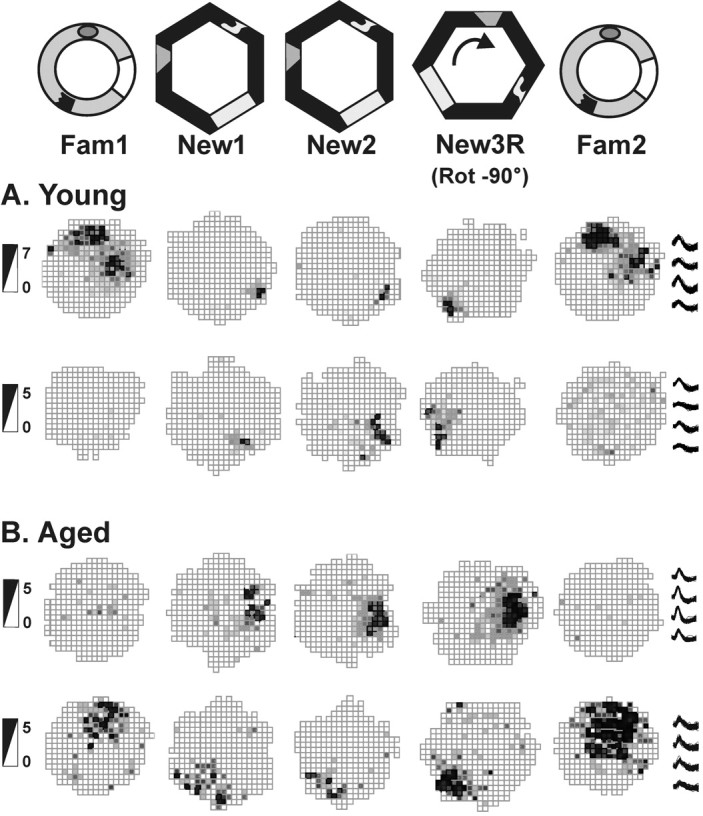Figure 3.

Session 2: spatial representations in the second exposure to the novel arena. Place fields of hippocampal cells in rats exploring the familiar cylinder (Fam) and the novel hexagon (New) arenas during session2 are shown. Data are shown for two cells of two young rats (rat G9 cell 10 and rat H5 cell 3) (A) and for two cells of two aged rats (rat G5 cell 1 and rat G6 cell 7) (B). In session 2, the fields of young and aged rats formed distinct spatial representations for each environment. When the new hexagon arena was rotated 90° clockwise before the trial New3R, the fields of young rats followed the landmarks cues by rotating their spatial representations. The fields of aged, memory-impaired rats failed to rotate with the arena; instead, they remained in the location of trial New2. Firing rate scales in spikes per second are provided on the left; example tetrode waveforms of each cell are shown on the right.
